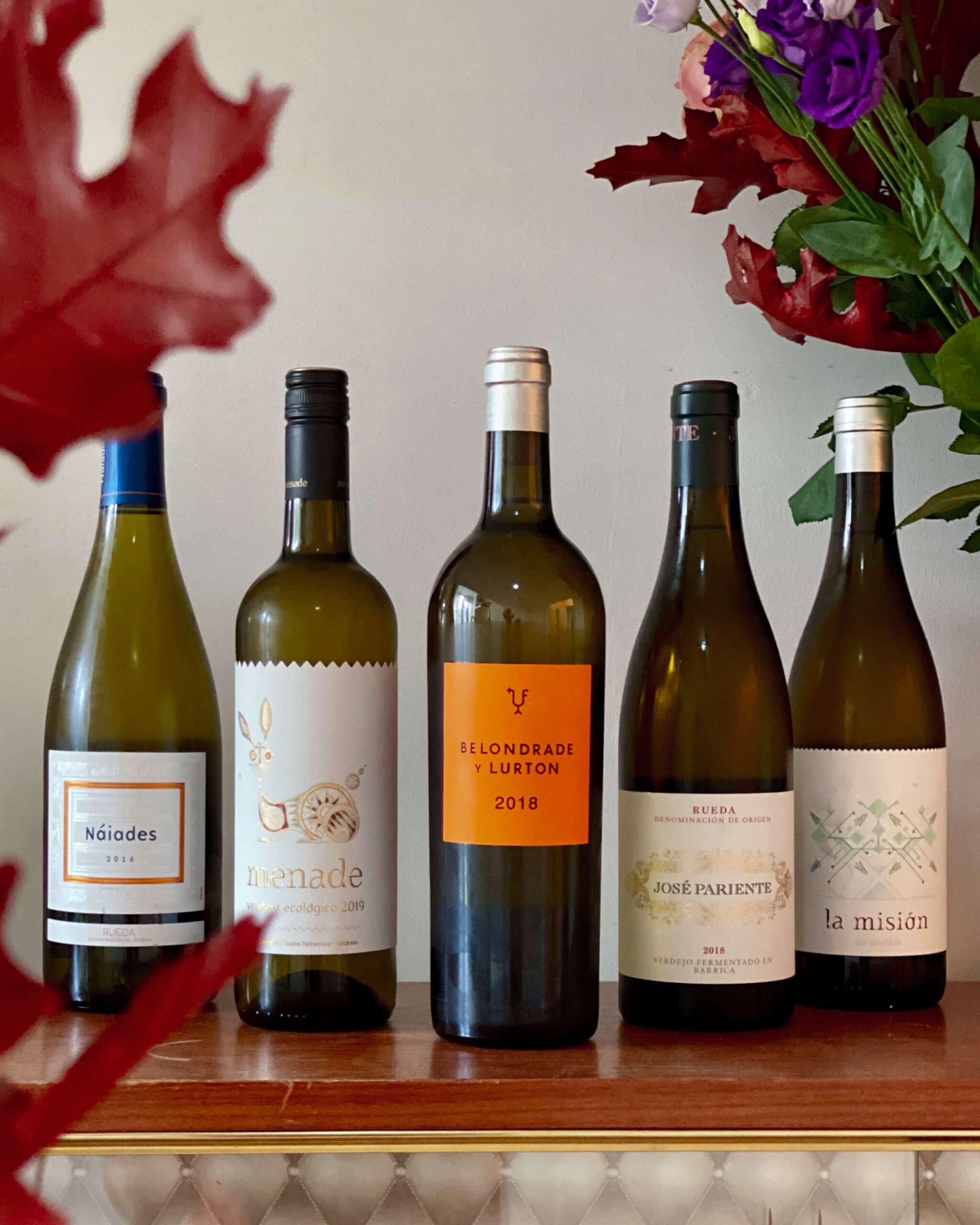Wine from the Rueda region is very trendy nowadays. In the Netherlands and in the rest of the world. This is partly due to the great value for money and the fresh style of the wines made with the Verdejo grape. Verdejo is a native Spanish grape that is more than once compared to the Sauvignon Blanc. The word Verdejo in Spanish means “greenish” and refers to the greenish hint the wine can show in your glass.
I was asked to be a judge in the contest organized by Rueda wines where we are looking for the Winefluencer of 2021 that will represent the Rueda region on Social Media. What an honor and what an opportunity to get to know the Rueda area and its wines better myself. I have heard that there are phenomenal Rueda’s that have nothing to do with that simple terrace Verdejo we can find on any street corner.
In this article I would like to take you to the top of Rueda wines and whilst we are here, let’s also discuss the ins and outs of the area!
The history of Verdejo
The Verdejo grape has been found in Spain since the eleventh century. The grape was probably taken from North Africa and spent some time in the South of Spain before settling in Rueda. The wine region was at its height until… you guessed it: Phylloxera (a lice that, at the end of the nineteenth century, killed most of the vines). Unfortunately the Verdejo plants were replaced by Palomino Fino and until 1970 the area only produced bad Sherry look a likes.
Wine area Rueda
Wine region Rueda is located in Castilla y Leon (north of Madrid and south of the Douro River) in the provinces of Valladolid, Ávila and Segovia, in the middle of nowhere. The 13,500 hectares of vineyards are located high up, between 600 and 800 meters above sea level. The climate is dry, the soil is rocky (except in Segovia where there is a lot of sand in the soil) and the temperature difference between day and night is enormous (this ensures that the grape retains its acidity, so wines with sufficient freshness!).
In 1970, winery Marqués de Riscal saw potential in Rueda and sent his winemaker Francisco Hurtado de Amézaga as a pioneer to the area. The first fresh style Verdejo’s were born and the rest is history. In 1980 Rueda got the DO status.
Grapes in Rueda
Today, there are 67 wineries, almost all of which operate organically. The area is known for its white wines, of the 13,500 hectares 11,300 are planted with Verdejo. Furthermore Sauvignon Blanc, Viura and Palomino Fino grow here. They also make red wine but since it is only 500 hectares, it is not very relevant to discuss here. Grapes are: Tempranillo, Cabernet Sauvignon, Merlot, and Garnacha.
Tasting the best Rueda’s
Enough talking. Time to taste something! For this article I selected a number of wines that the experts have chosen several times as the best Rueda wines. Exciting!
Menade Nosso Verdejo natural 2019
This Verdejo was declared Vin nature of the year by the magazine proefschrift so I just had to taste it! No sulphite is added to the wine and in the vineyards the work is completely natural. The wine also ferments spontaneously.
The result is a wine with a lot of character. You can smell ripe apples, ripe pears, spiciness in the form of anise. The wine has fresh acidity and the ripeness gives a hint of sweetness. Not your standard Verdejo and especially a must for the natural wine lovers among us!
From the same winery as the wine above. This time the wine aged in oak barrels and amphora. The wine matures after bottling for another 2 years in bottle.
The wine is unique. Very elegant, complex with lots of citrus, salty, nicely accompanied by the oak. The wine is silky soft. I could drink a bottle of this one!
A pre-phylloxera Verdejo from Bodegas Naia. Fermented and matured in oak barrels. The wine ripens further sur lie and has a limited yield. A much praised wine.
Beautiful golden yellow color. Complex ripe nose, peach and mandarin, a nutty touch, all carried by the toasty aromas of the oak. The wine has juicy acidity and therefore sufficient freshness. Wonderful!
José Pariente fermentado en barrica 2018
Beautiful Verdejo matured on oak barrels with limited bottles (± 4000 bottles per year).
The vines are over 35 years old, with low yields.
My favorite of all that I tasted! Very pure in the nose, lots of citrus and almond. Creamy and elegant. A salty touch. The oak is nicely integrated.
The king of Rueda who was proclaimed several times as the best white wine of Spain. The wine is spontaneously fermented and matures for 10 months in French oak.
In the nose ripe apple, flowers, great spices like cinnamon. On the palate beautiful almond bitters, lively acidity. A wine to accompany your meal with, a long aftertaste. The wine is still young and has great potential.

Are you inspired and would you like to be paid to drink wine? Then join the Rueda contest organized by TOTPR and Rueda wines!

